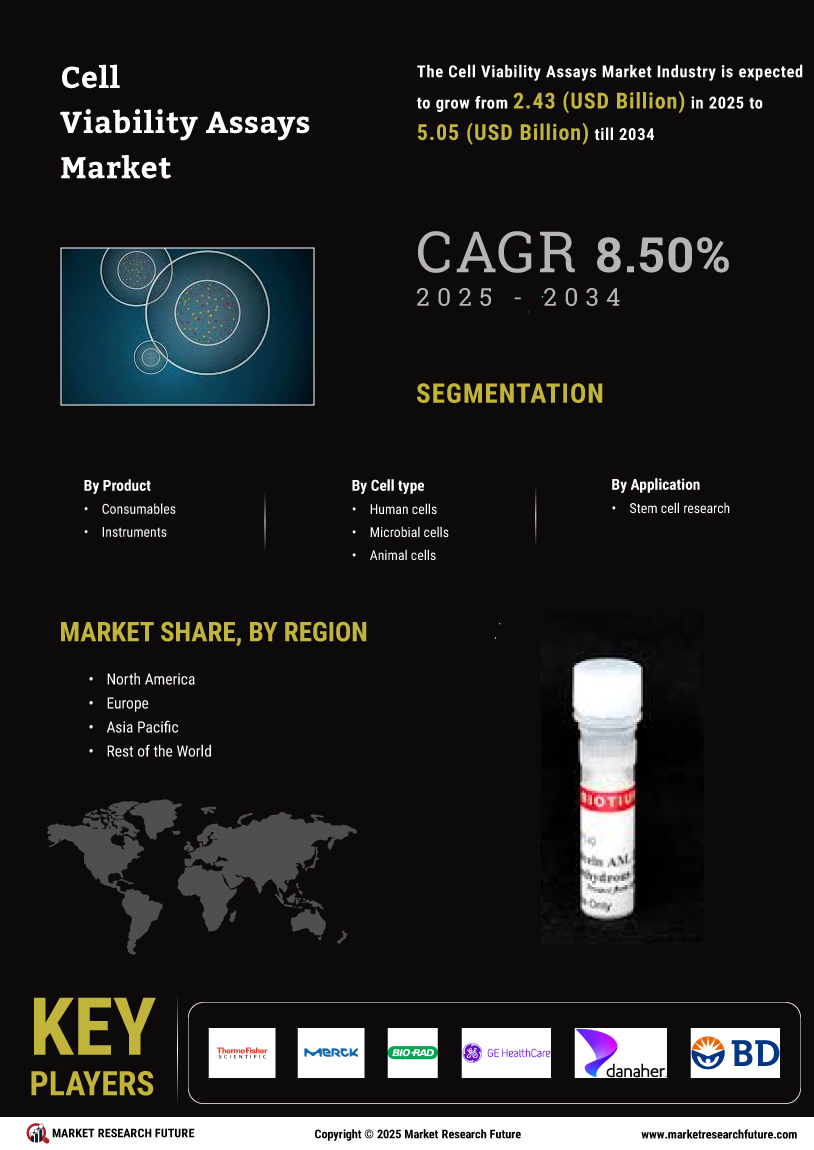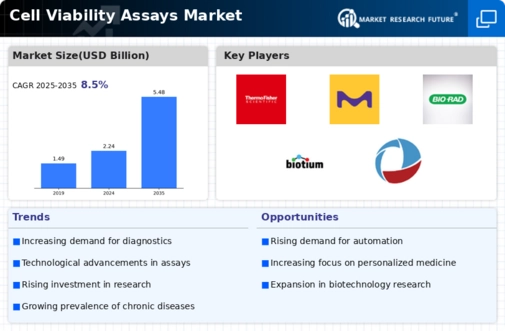Leading market players are investing capital and resources across research and development to extend their product offerings, this is expected to help the Cell Viability Assays market, grow even more. Market leaders and manufacturers are also adopting various strategies to expand their worldwide footprint, with important market developments including new product developments & launches, contracts & agreements, mergers & acquisitions, higher investments, and collaboration with other organizations. To expand and survive in a more competitive and rising market climate, the Cell Viability Assays industry must offer cost-effective items.
The manufacturers are making use of locally available resources to minimize the production costs which will aid the growth of the Cell Viability Assays industry to benefit clients and increase the market sector. In recent years, the Cell Viability Assays industry has offered some of the most significant advantages to medicine. Major players in the Cell Viability Assays Market, including Thermo Fisher Scientific, Merck KGaA, Bio-Rad Laboratories, GE Healthcare, Danaher Corporation, Becton Dickinson & Company, Promega Corporation, Biotium, Abcam plc, Creative Bioarray, and others, are attempting to increase market demand by investing in research and development operations.
A manufacturer and distributor of medical equipment, reagents, and instruments is Becton Dickinson and Co. (BD). Syringes and pen needles, intravenous catheters, infusion pumps, disposables, automated medication dispensing, and supply management systems, pre-fillable drug delivery systems, respiratory ventilation and diagnostic equipment and consumables, items for the secure collection and transportation of diagnostic specimens, instruments and reagent systems to detect a variety of infectious diseases and cancers, and clinical research tools are among its main products. Researchers working in the field of life sciences, hospitals, clinics, the pharmaceutical sector, and the general public can all benefit from BD's products.
In February 2022, A privately held company with its headquarters in Salamanca, Spain, Cytognos specializes in flow cytometry solutions for blood cancer diagnosis, minimal residual disease (MRD) detection, and immune monitoring research for blood diseases. Today, BD, a leading medical technology company, announced that it has successfully acquired Cytognos.
GE Healthcare Technologies Inc. (GE HealthCare) is a leading provider of medical devices, specializing in the design, development, production, and distribution of diagnostic imaging, clinical systems, drug discovery, biopharmaceutical production, cellular technologies, imaging agents for use in medical scanning, and a variety of healthcare IT products. Additionally, GE HealthCare offers services including computerized data management, performance enhancement, performance solutions, and remote diagnosis and repair services for medical devices made by the business and others.
In June 2021, GE Healthcare presented new molecular imaging products and solutions at the Society of Nuclear Medicine and Molecular Imaging (SNMMI) 2021 summer conference, along with new chances to increase reach to radioactive tracers & pharmaceutical imaging agents.

















Leave a Comment